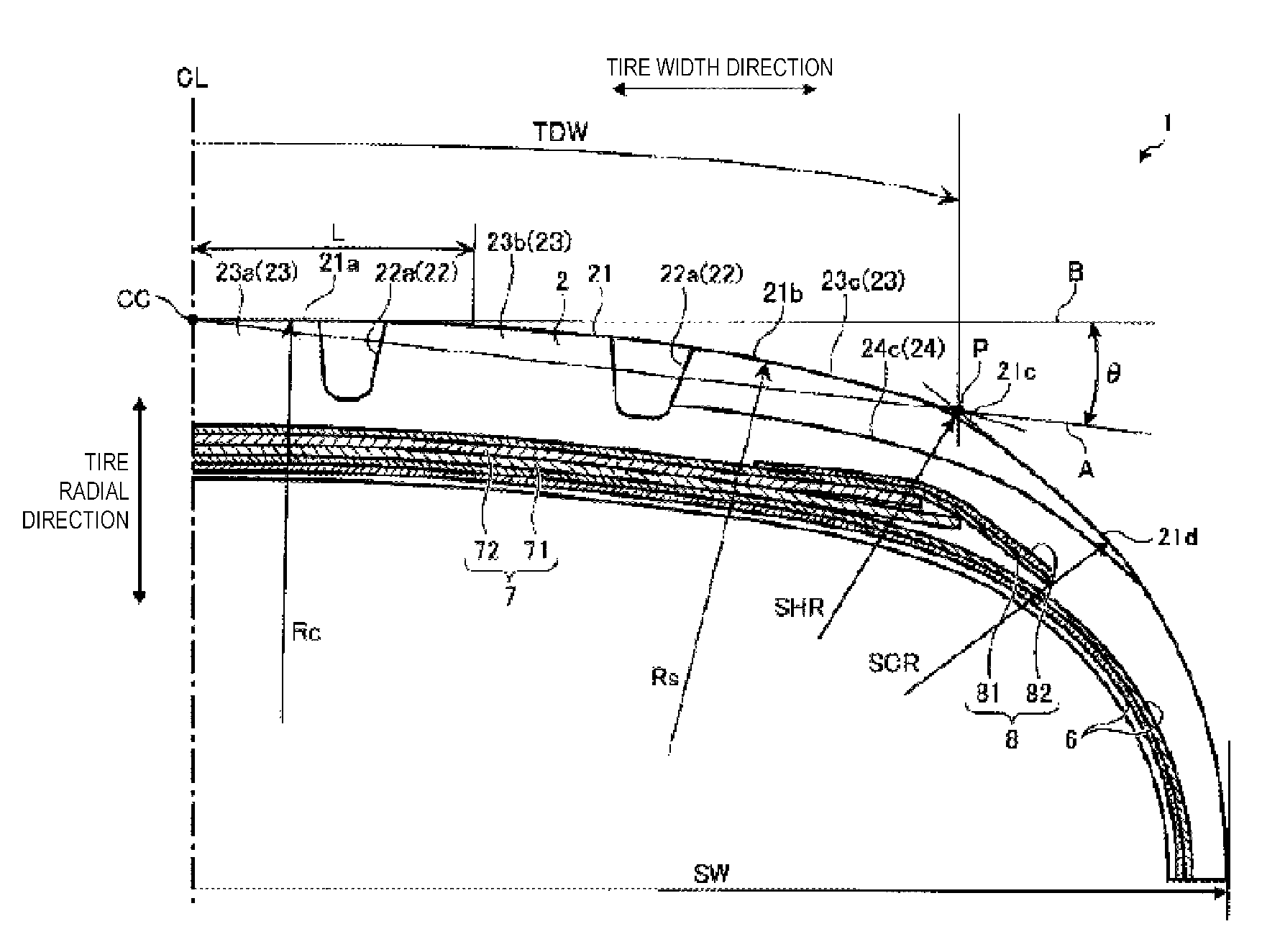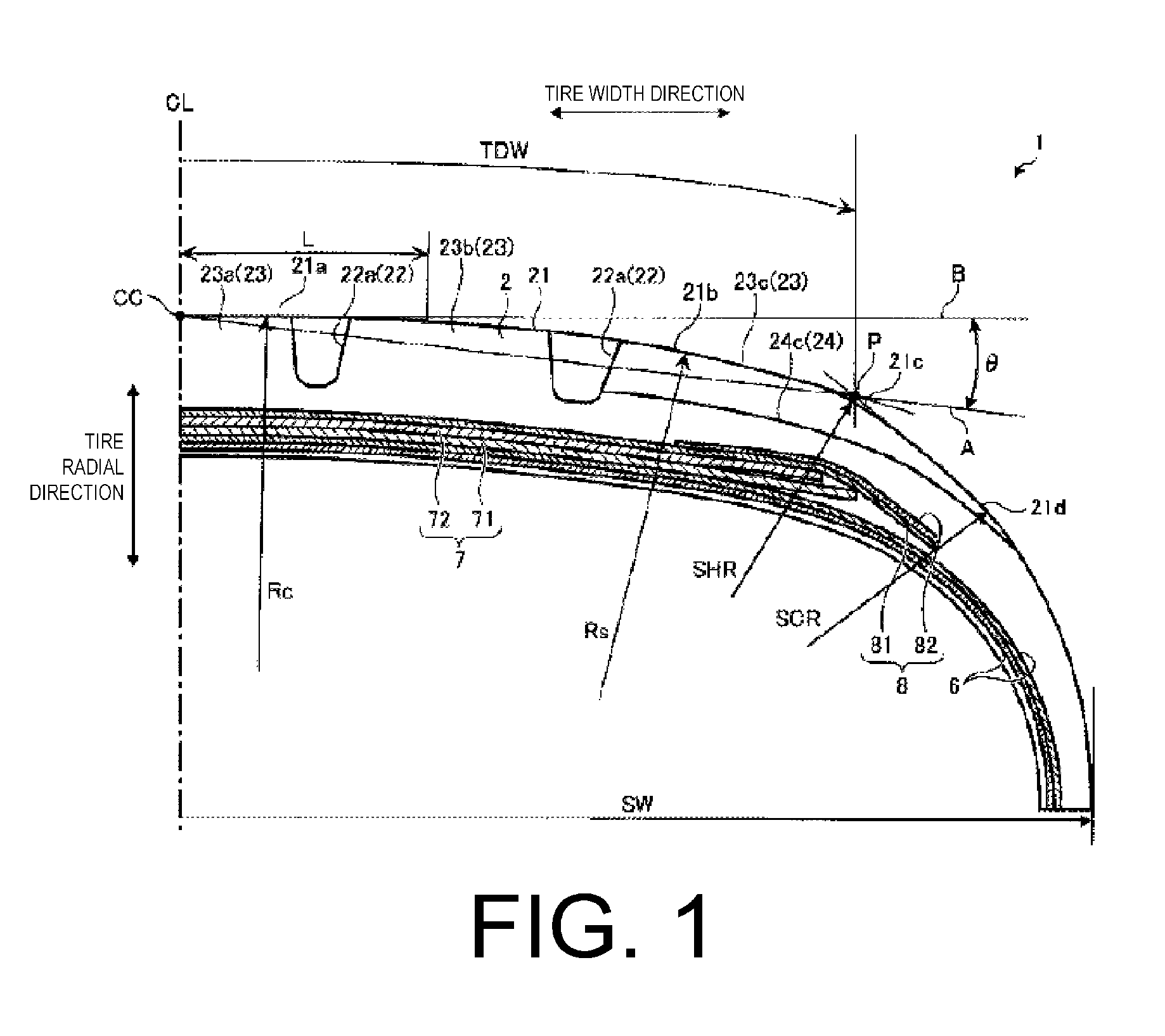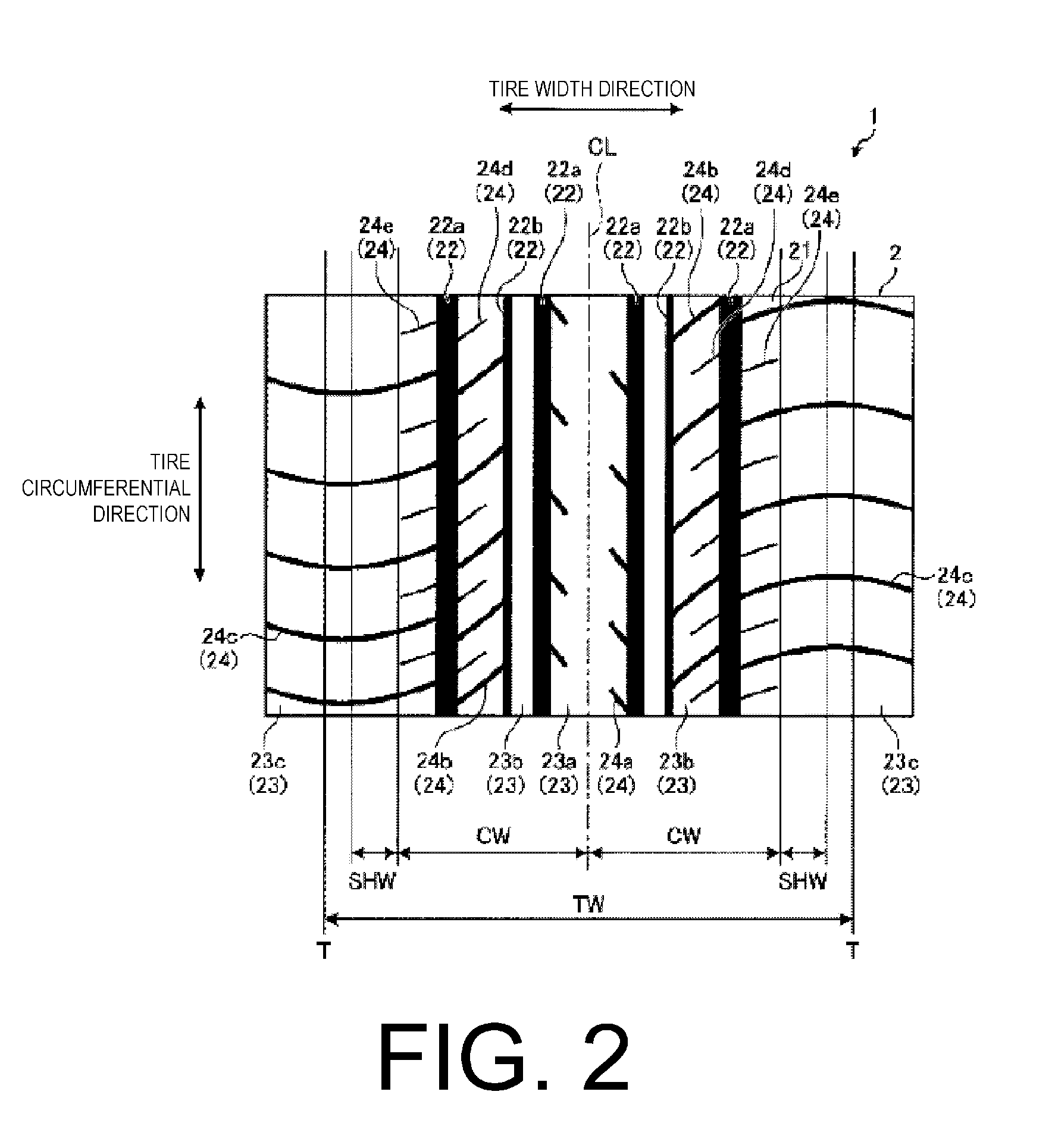Pneumatic tire with tread having different curvature radii
a pneumatic tire and curvature radii technology, applied in the field of pneumatic tires, can solve the problems of increasing the radial growth of the center region, the uneven wear of the pneumatic tire, and the center region of the tread surface becoming prone to wear, so as to reduce the rolling resistance, improve fuel efficiency, and reduce the effect of rolling resistan
- Summary
- Abstract
- Description
- Claims
- Application Information
AI Technical Summary
Benefits of technology
Problems solved by technology
Method used
Image
Examples
examples
[0056]In the examples, performance tests for tire performances (center wear, shoulder wear, and rolling resistance) were performed on a plurality of types of pneumatic tires under different conditions (see FIGS. 3 to 8).
[0057]Of these performance tests, in Conventional Examples 1 and 2, Working Examples 1 to 12 and 17 to 28, and Comparative Examples 1 to 6 shown in FIGS. 3 to 5, 7, and 8, a pneumatic tire having a tire size of 215 / 55R17 was assembled on a rim of a 17×7J aluminum wheel, inflated to an air pressure specified for each example, and mounted on a test vehicle (3 L front-engine rear-drive (FR) sedan). The pneumatic tires used in the performance tests had an aspect ratio of 55. Therefore, a range of θ was 2.375≦θ≦4.975, and a preferable range was 2.85≦θ≦4.5. Of these performance tests, in Conventional Examples 3 and 4, Working Examples 13 to 16, and Comparative Examples 7 and 8 shown in FIG. 6, a pneumatic tire having a tire size of 245 / 35ZR19 was assembled on a rim of a 19...
PUM
 Login to View More
Login to View More Abstract
Description
Claims
Application Information
 Login to View More
Login to View More - R&D
- Intellectual Property
- Life Sciences
- Materials
- Tech Scout
- Unparalleled Data Quality
- Higher Quality Content
- 60% Fewer Hallucinations
Browse by: Latest US Patents, China's latest patents, Technical Efficacy Thesaurus, Application Domain, Technology Topic, Popular Technical Reports.
© 2025 PatSnap. All rights reserved.Legal|Privacy policy|Modern Slavery Act Transparency Statement|Sitemap|About US| Contact US: help@patsnap.com



